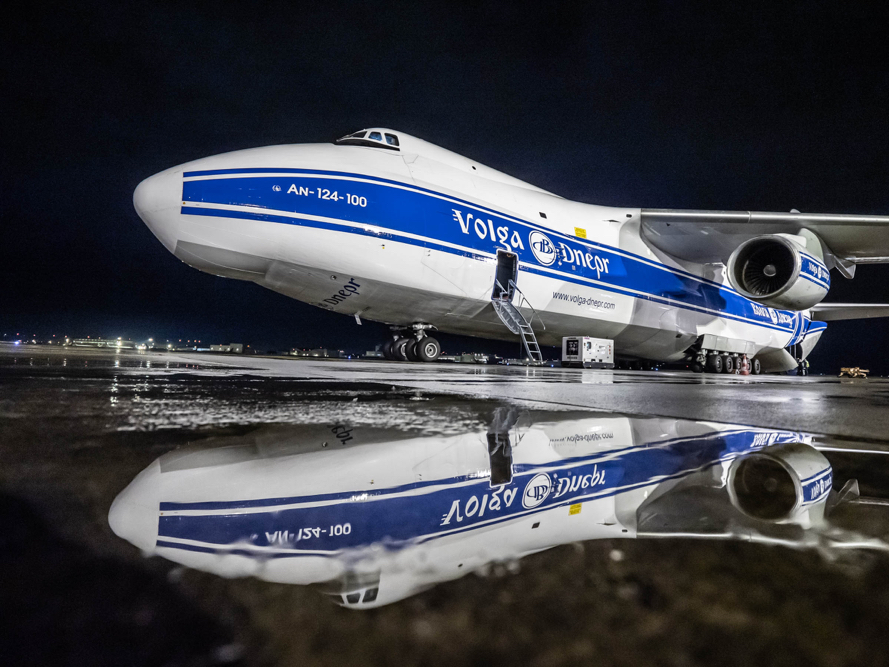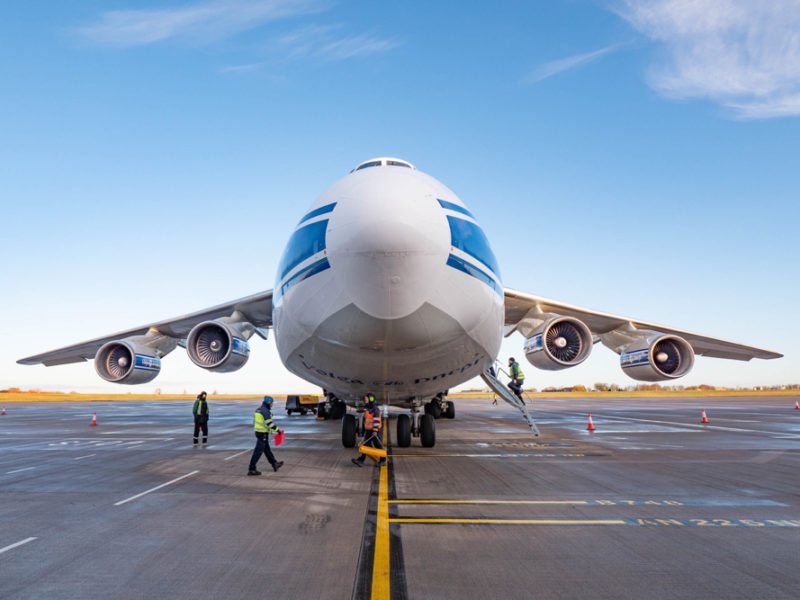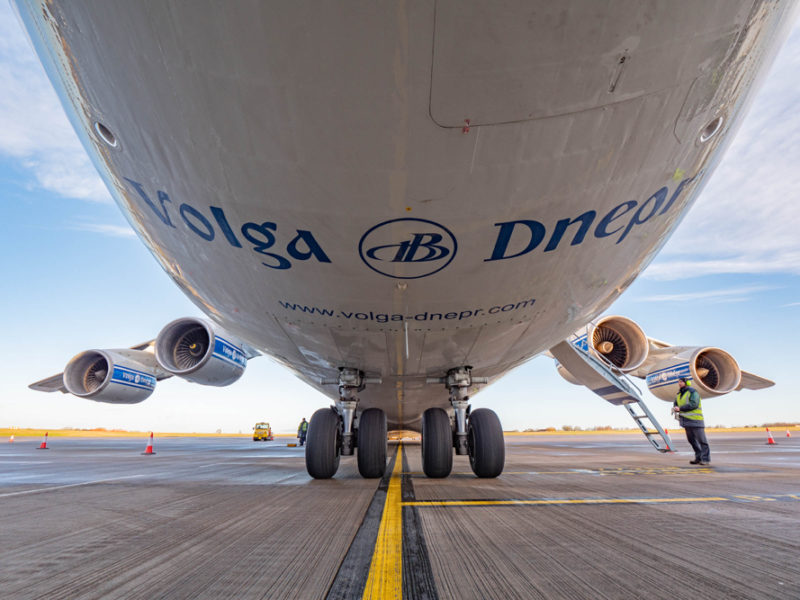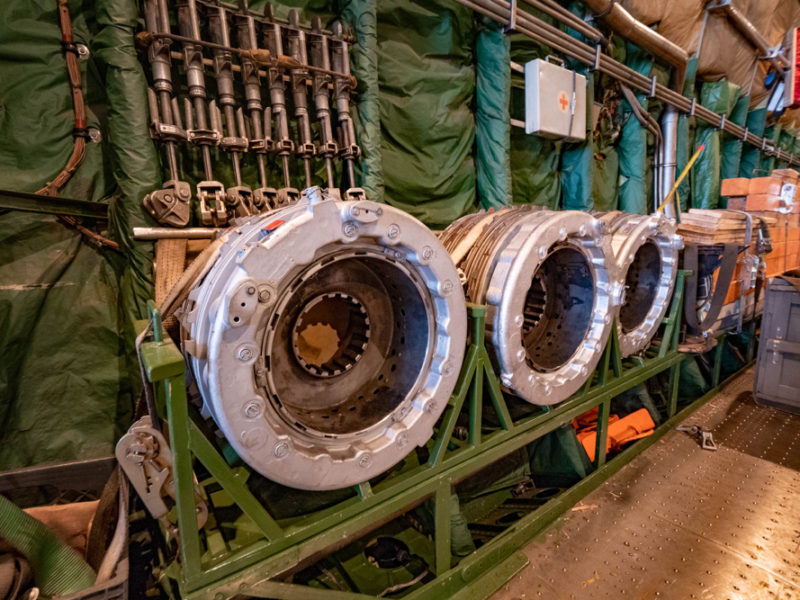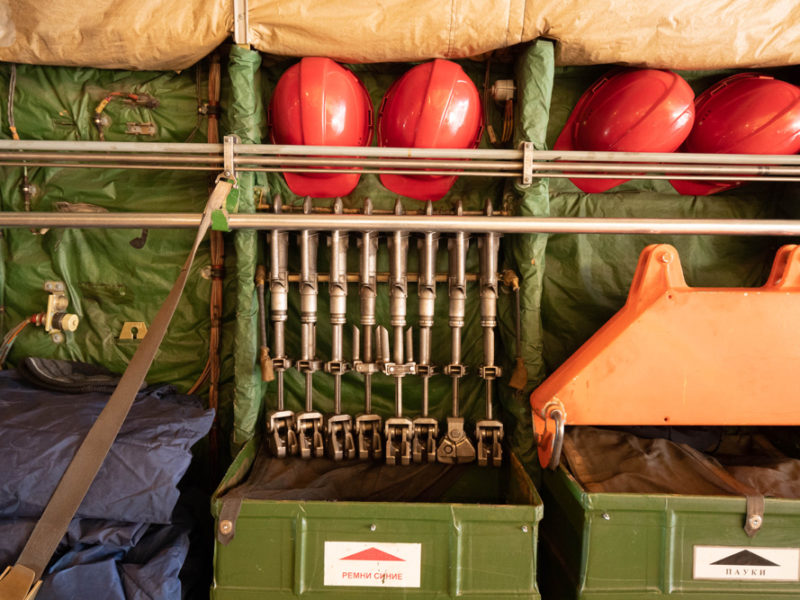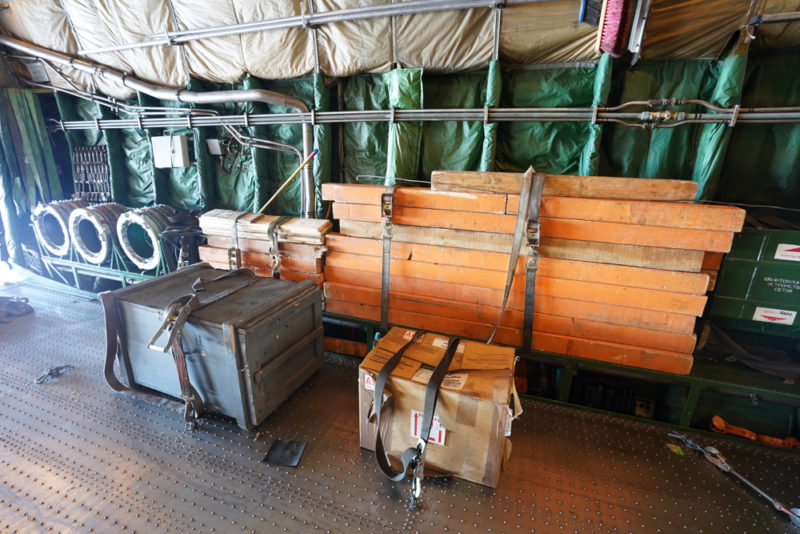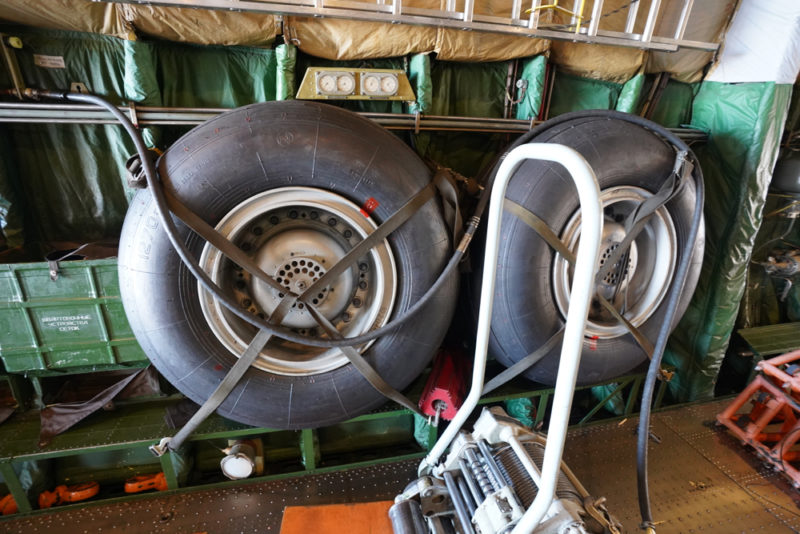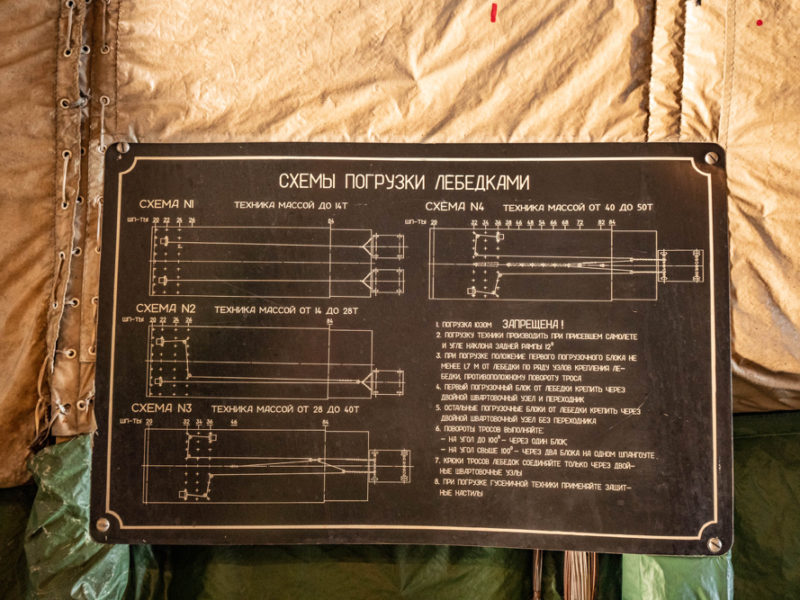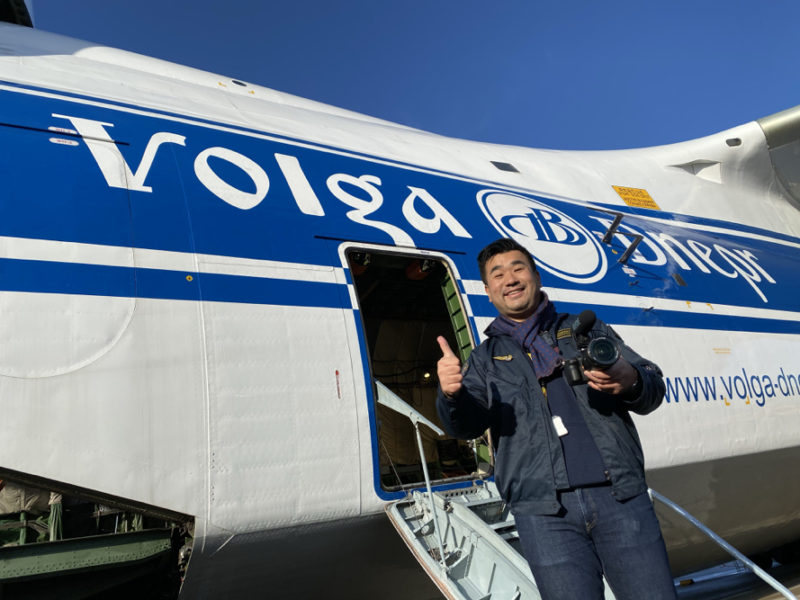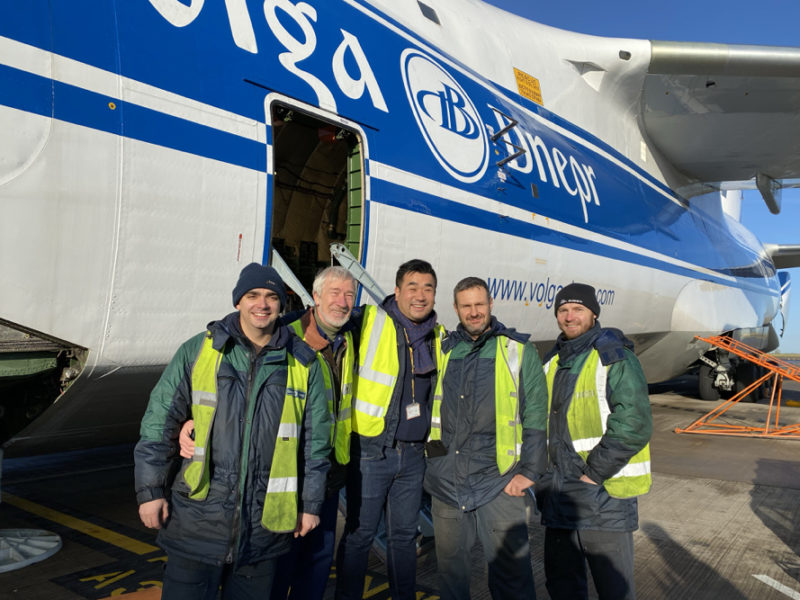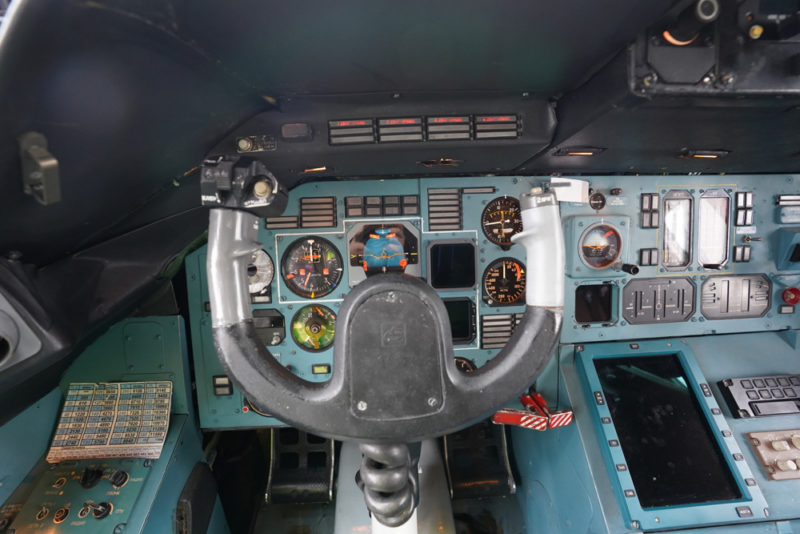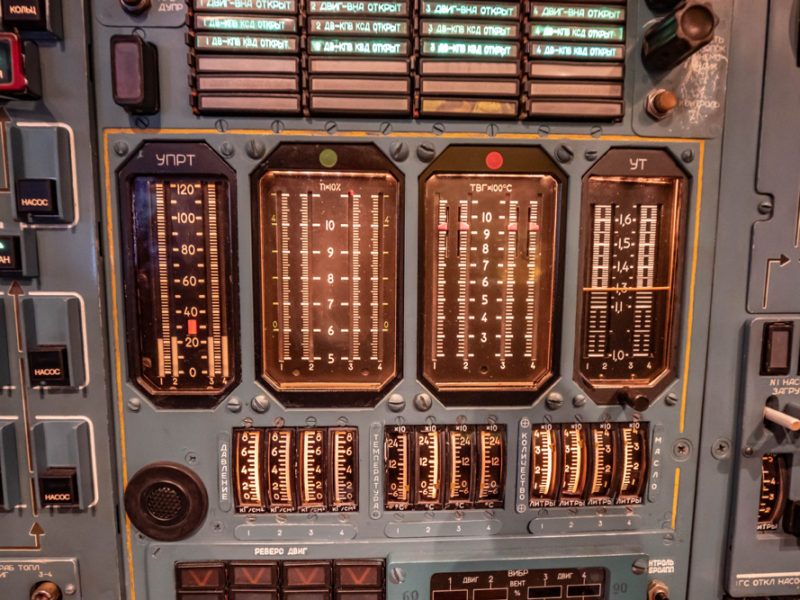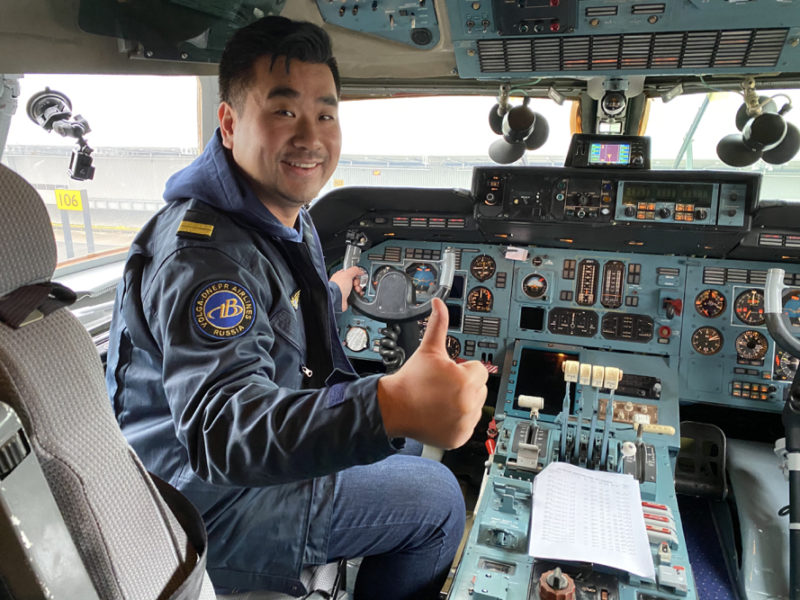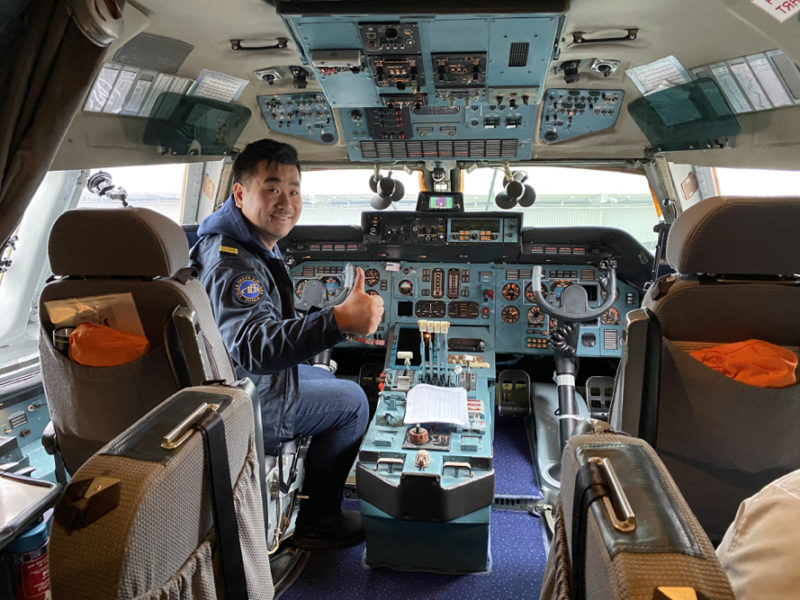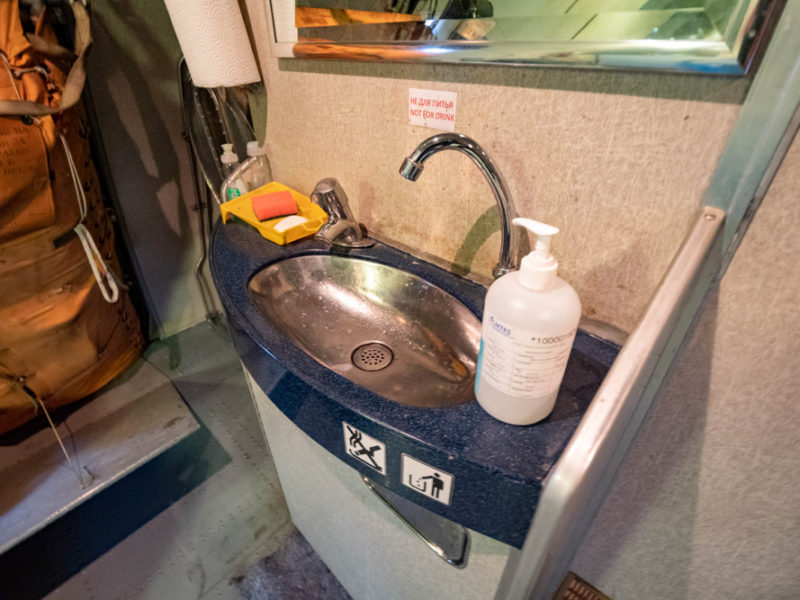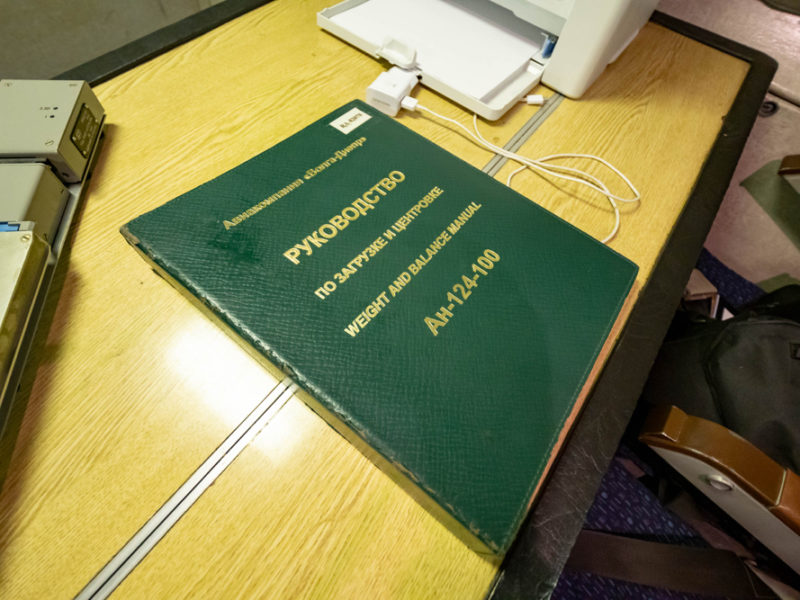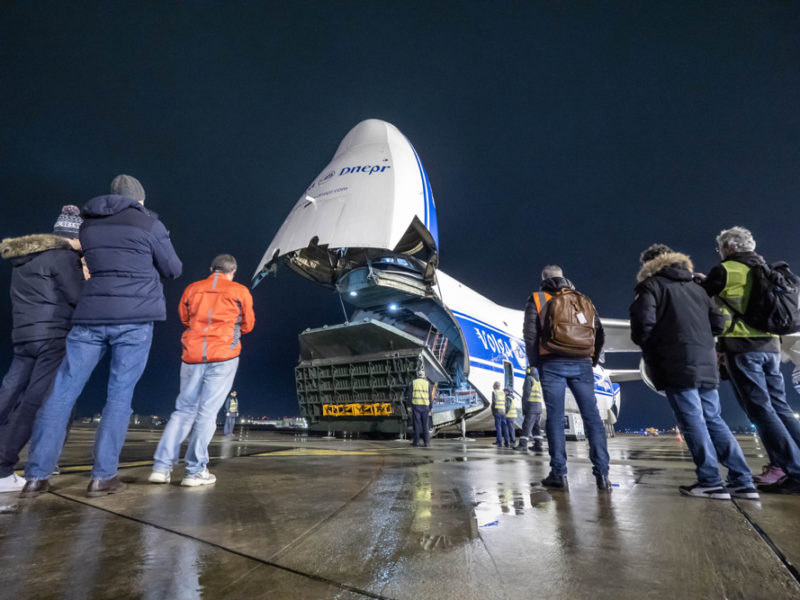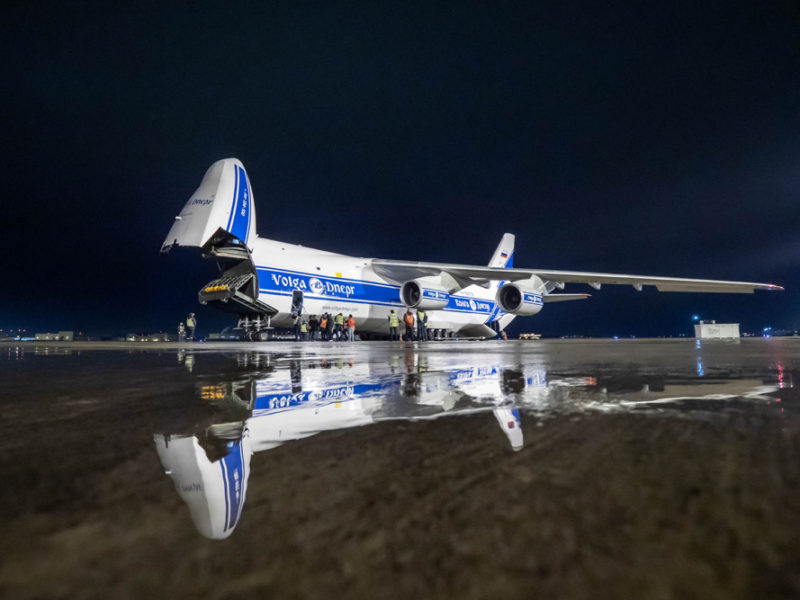The Antonov An-124 Ruslan is a strategic airlift quadjet. It was designed in the 1980s by the Antonov design bureau in the Soviet Union (USSR).
It was a rare and interesting experience seeing first hand an Antonov An-124 in operation, loading and later flying on it.
Volga Dnepr Airlines is the world's biggest operator of An-124, the airline owns 12 An-124. Registration RA-82078 arrived empty on a clear morning in the East Midlands, ready to take on a special cargo to Toulouse.
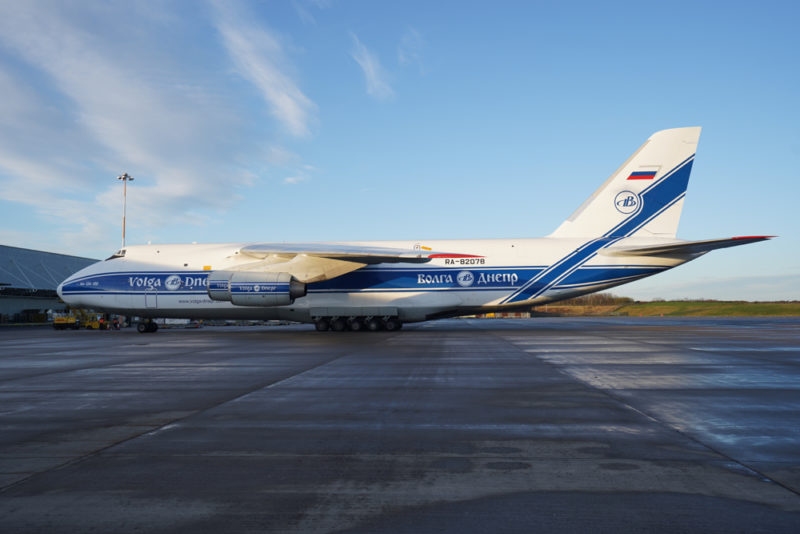
The An-124 is a rare airplane that can load from both the front and the rear. It doesn't need any ramp equipment support for loading. In fact, the equipment came inside the plane itself.
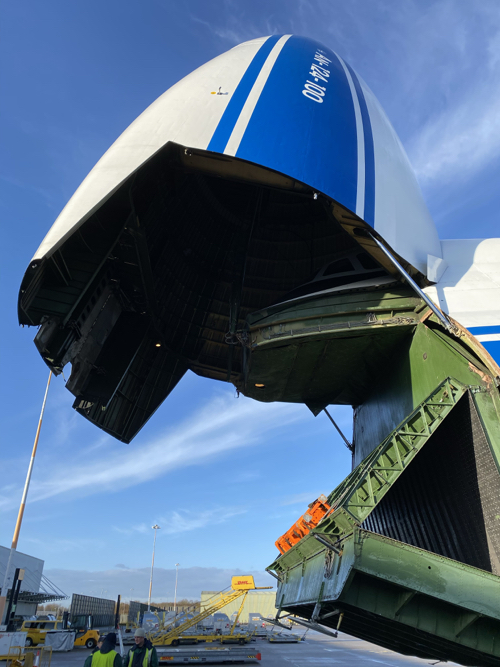
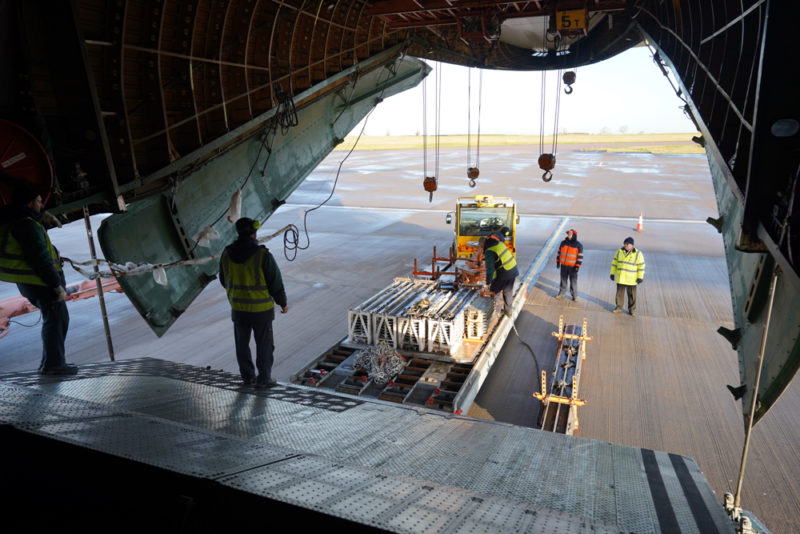
The on-board system consists of 2 gantries with two hoists, each equipped with 2 lifting hooks capable of lifting up to 20 tonnes.
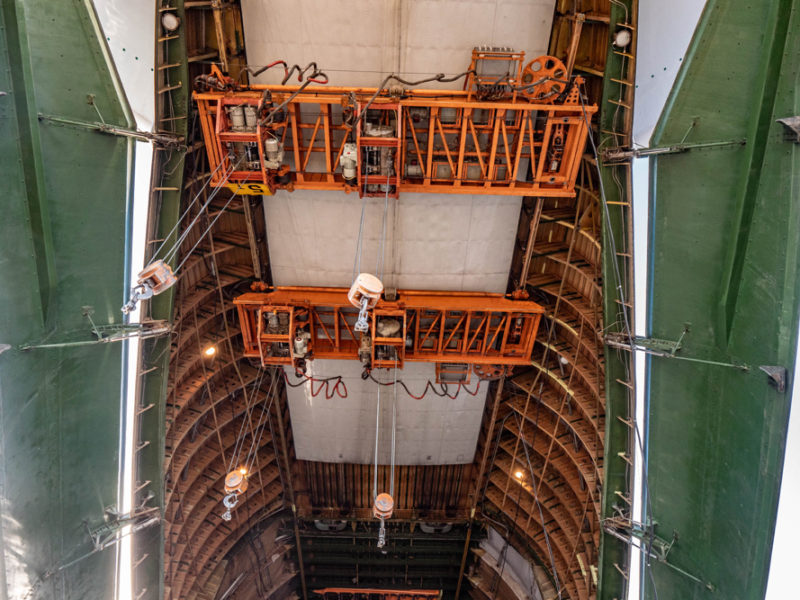
Built in crane of An-124 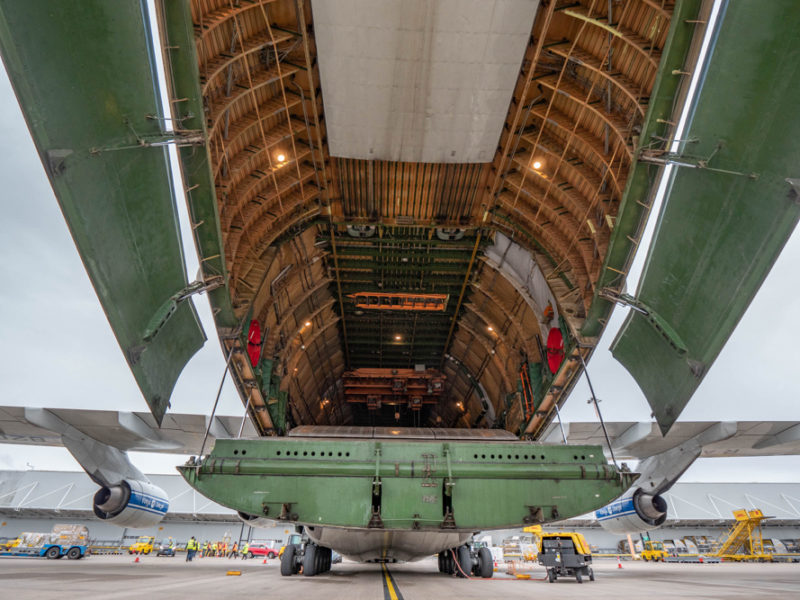
Rear door of An-124
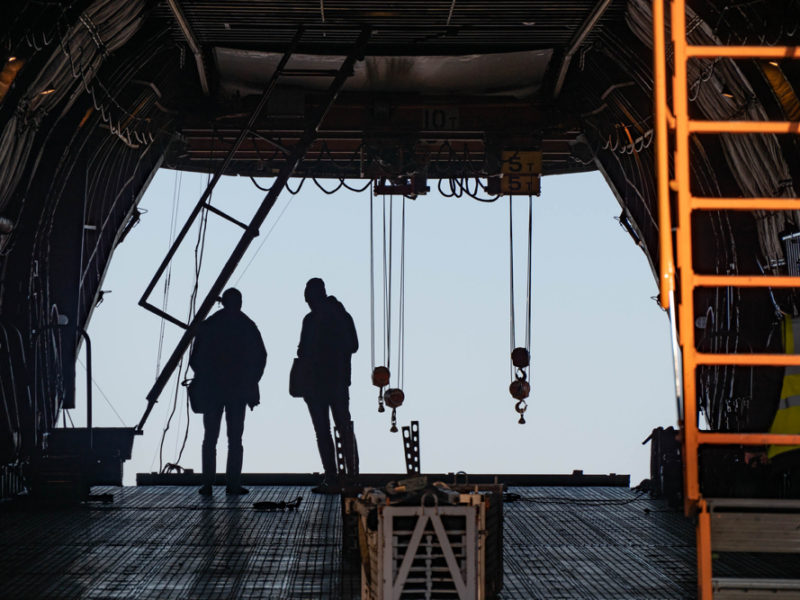
The front wheels can fold down to lower the front cargo door ramp, creating a loading ramp without any external support.
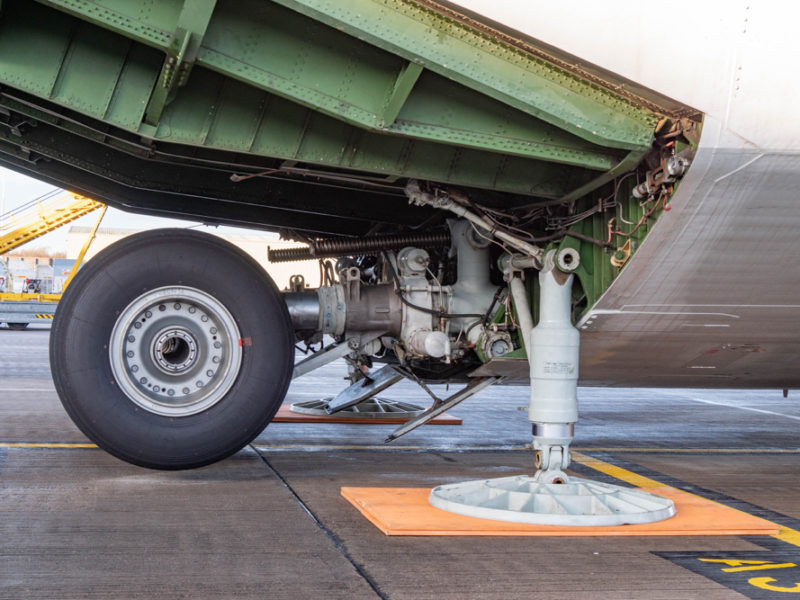
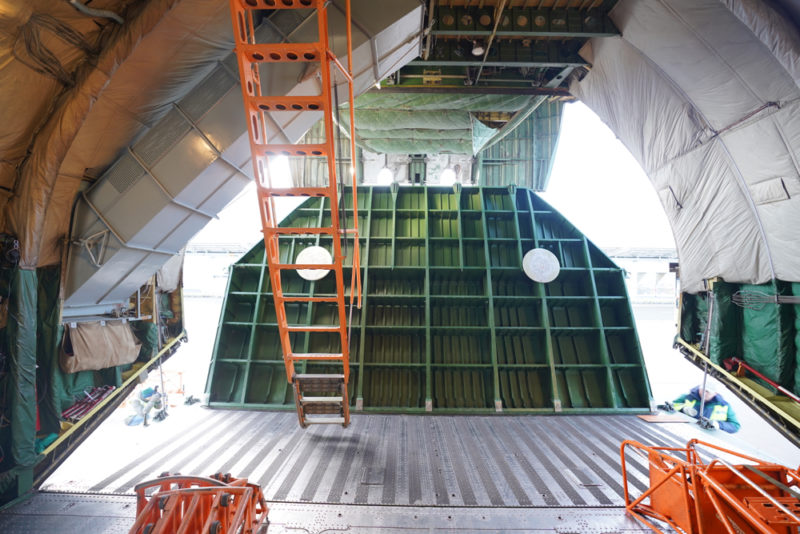
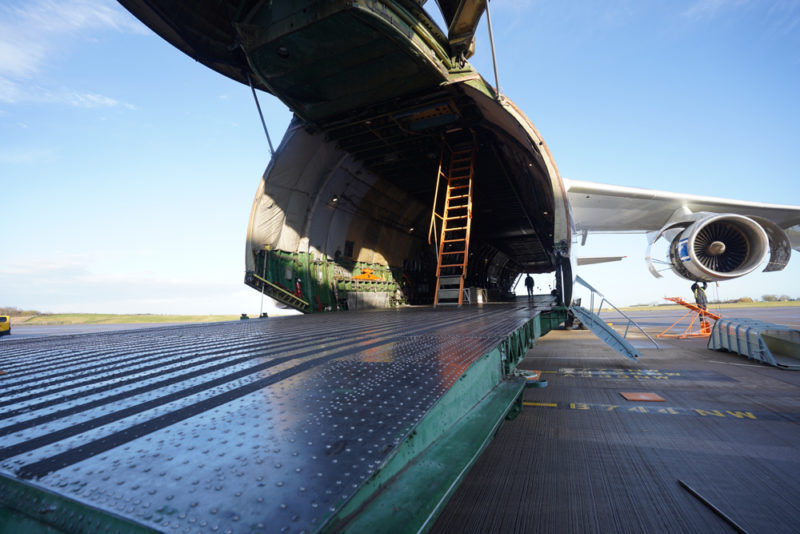
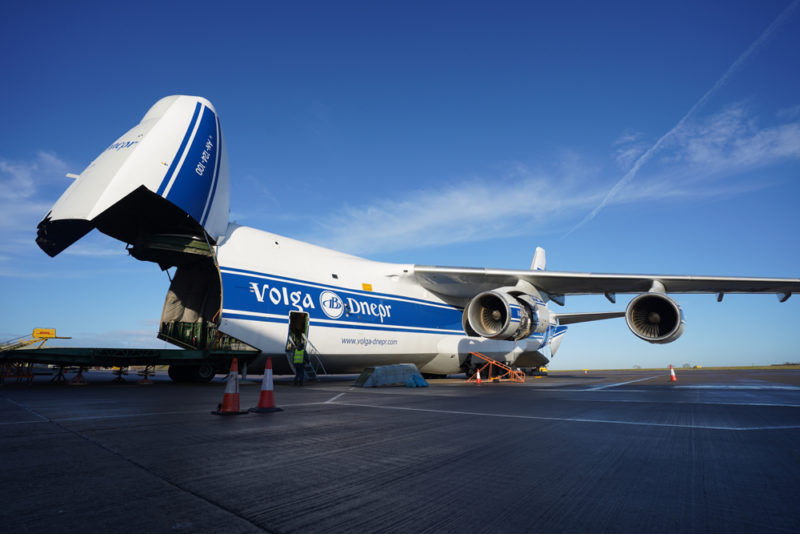
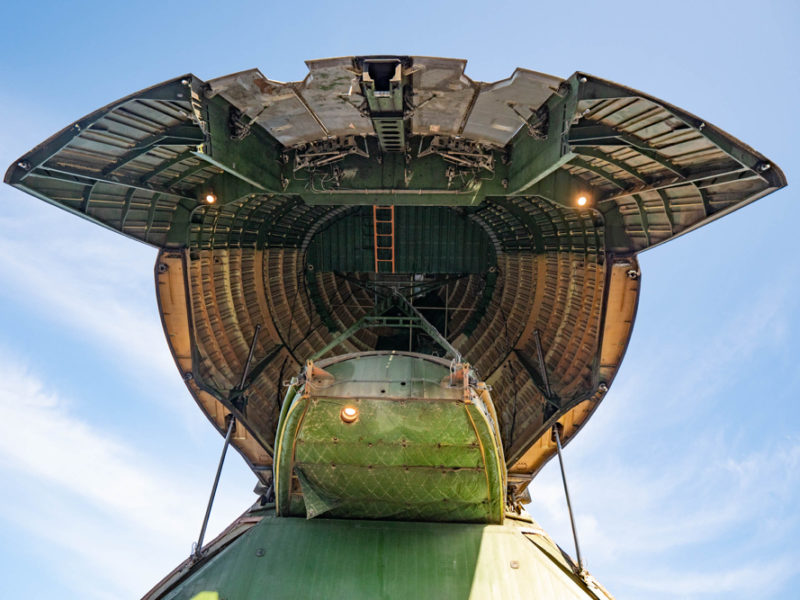
Once the door is lowered, the built in crane brought out additional equipment to set up the ramp ways that connect to the tarmac.
A total of 7 crew from An-124 are responsible for the loading, lead by load master Konstantin. These crews are all licensed engineers that can also perform mechanic work, such as engine checks on the An-124.
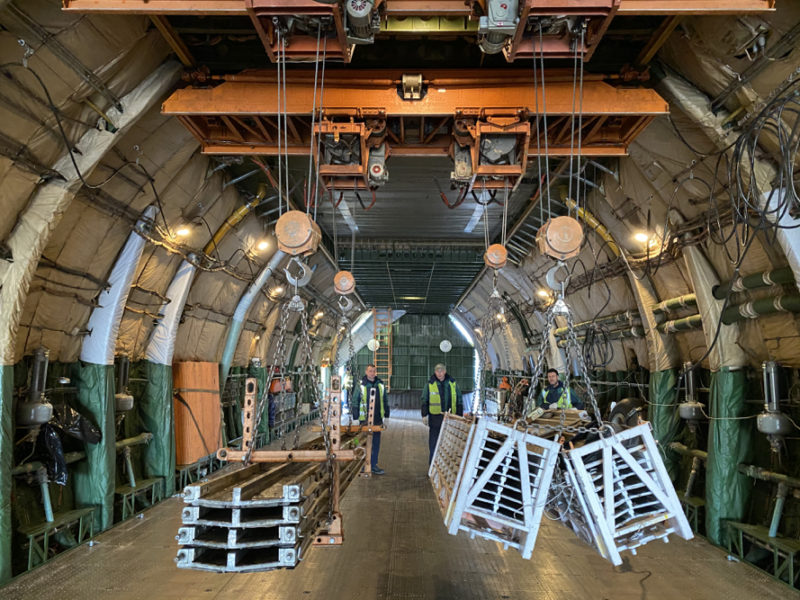
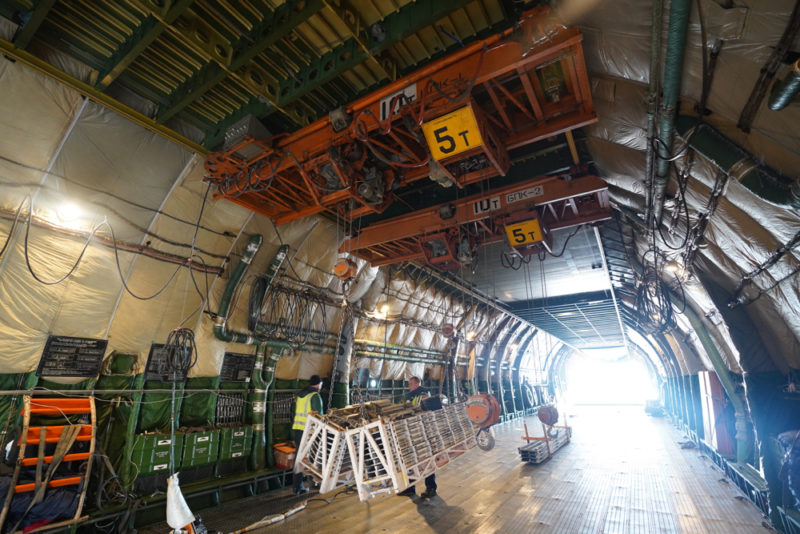
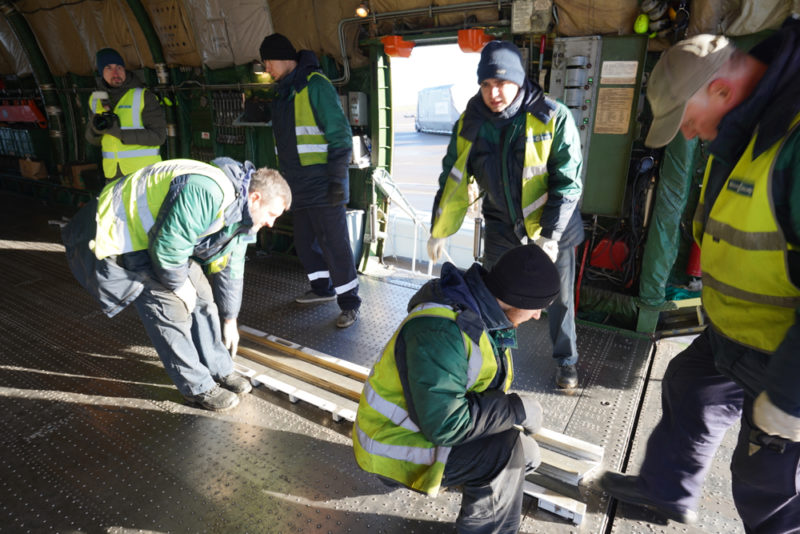
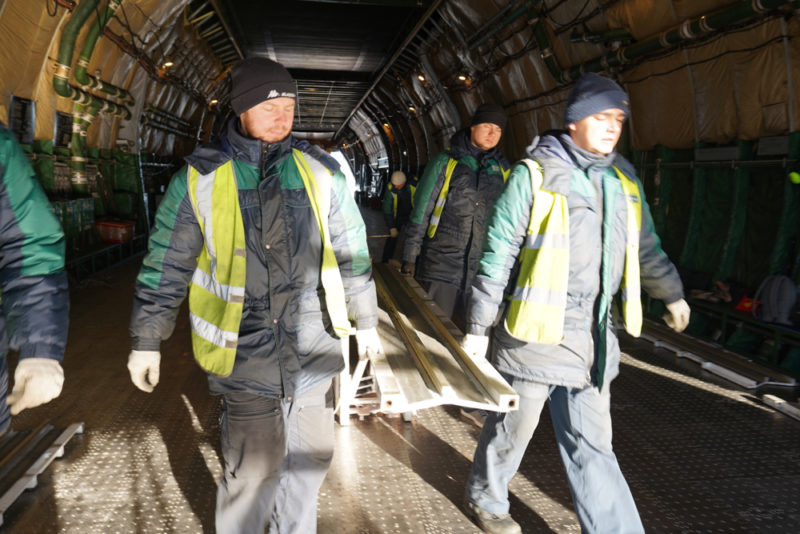
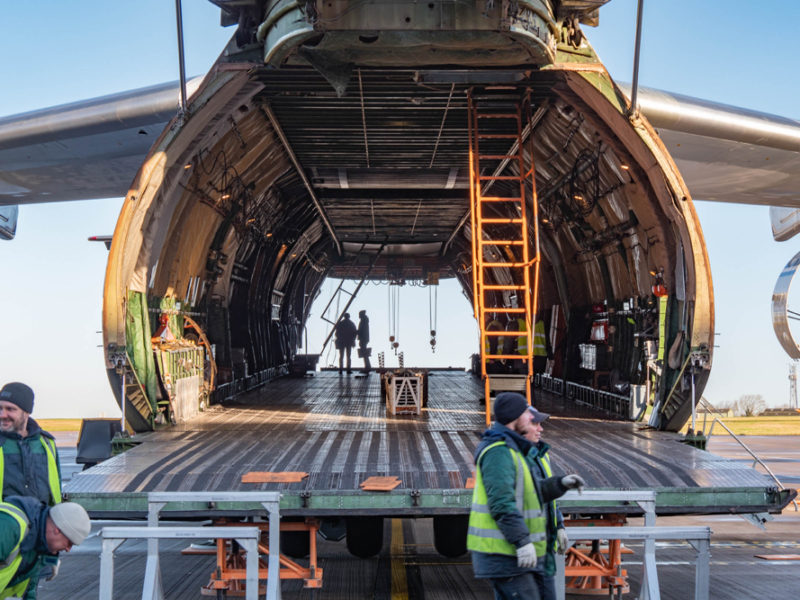
See through the An-124 from front to back 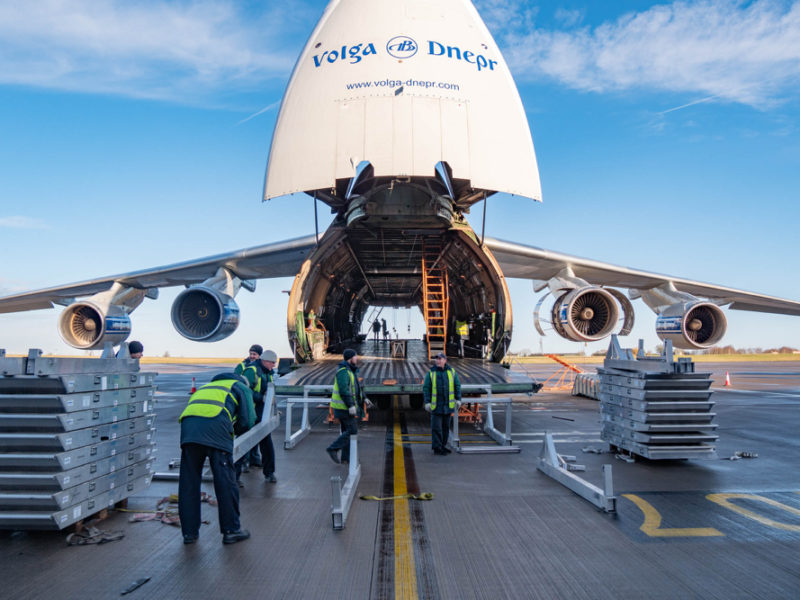
See through the An-124 from front to back
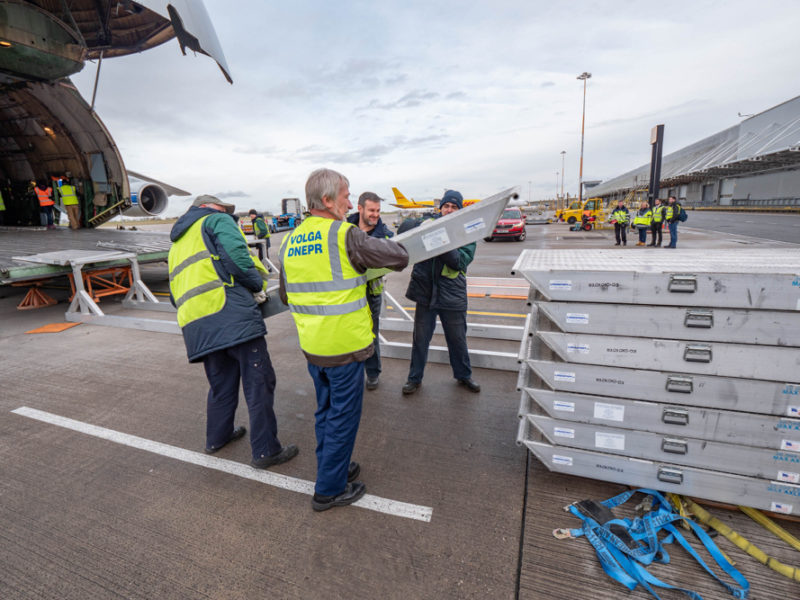
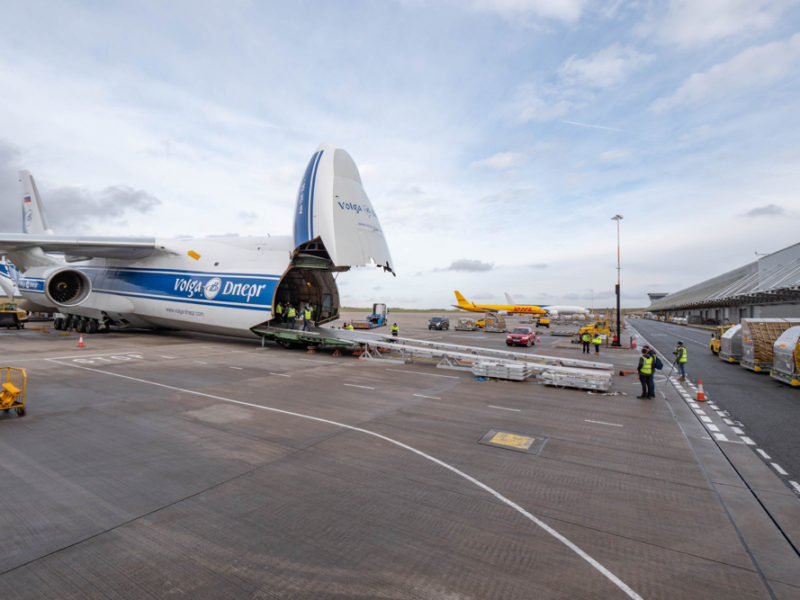
Due to the sensitive nature of the cargo, pictures were not allowed during the loading. A typical shipment on An-124 includes:
- Aerospace (aircraft engines, wings, satellites)
- Oil, gas and energy (turbines, power generators, rotors)
- Humanitarian (Humanitarian relief goods, Mobile Hospitals, infrastructure support)
It took almost 3 hours to set up the ramp and get ready for loading. It took a further 2.5 hours to load the cargo in and get ready to depart.
Interior of An-124
The Antonov 124 has about 120 tons of oversized cargo payload. It carries a lot of equipment, spare parts, wheels and tools inside the plane.
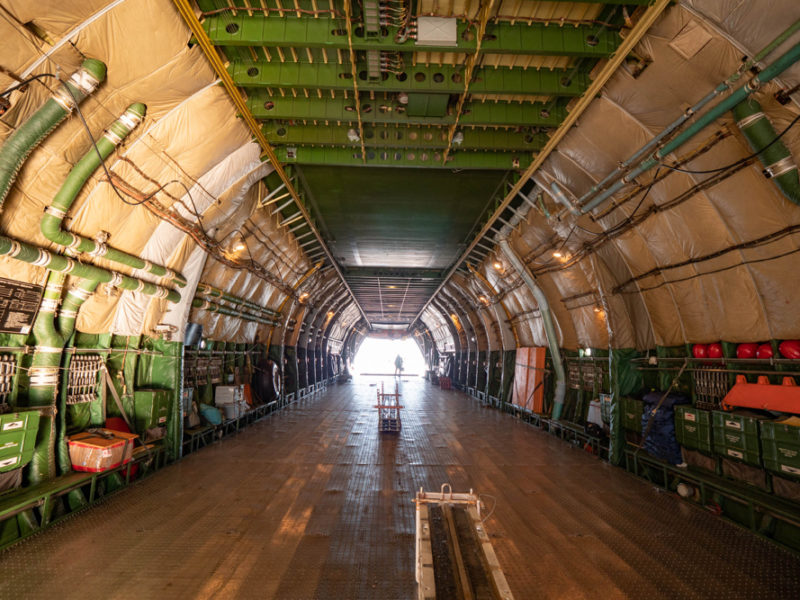

The Antonov 124 is powered by 4 × Progress D-18T high-bypass turbofan engines, with each engine providing 229 kN (51,000 lbf) of thrust.
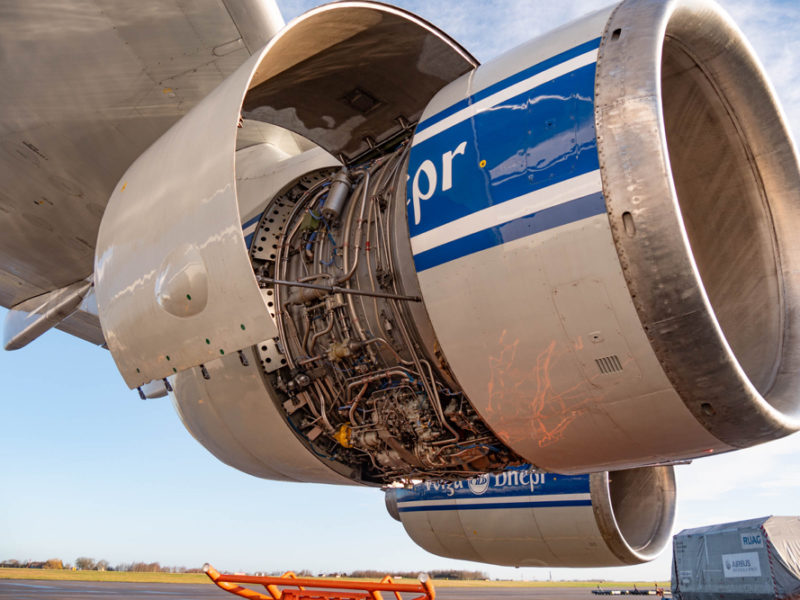
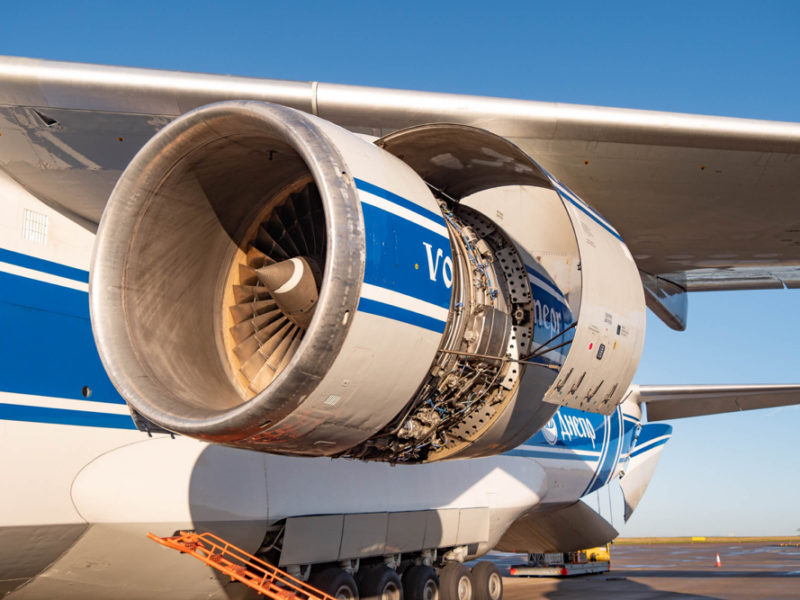
An-124 has 24 wheels in total and a fuel capacity of 348,740 litres. Today's flight to Toulouse took on 21 tons in fuel.
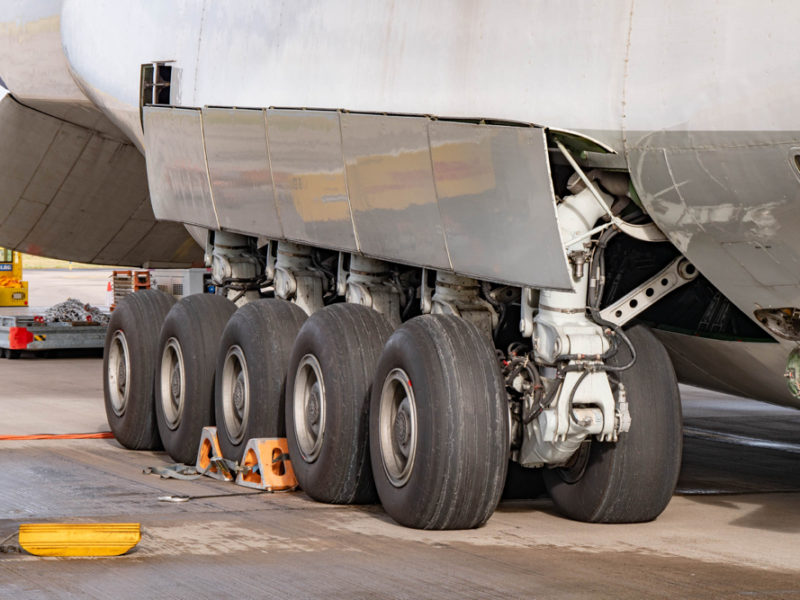
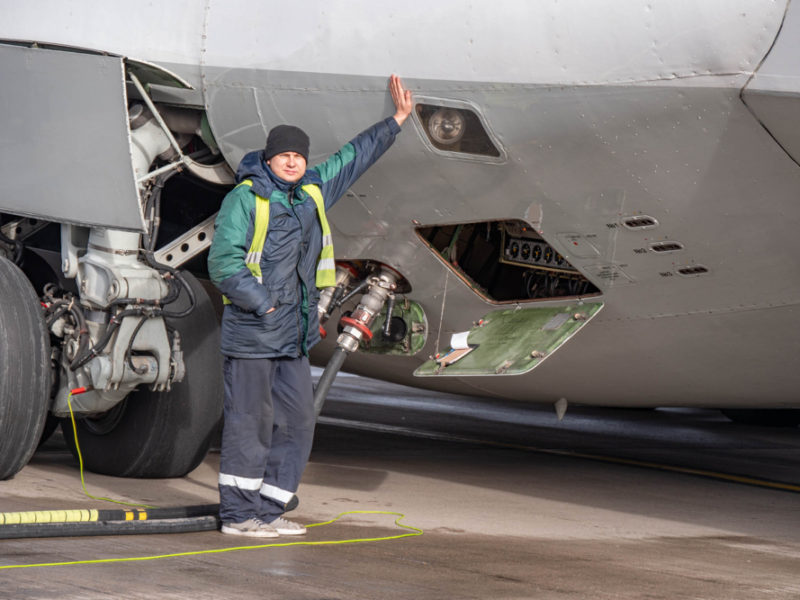
Cockpit of An-124
The cockpit of An-124 is 10m tall from ground and it is accessed via a stairway. The cockpit itself is huge, one of the biggest I've seen on an airplane. The cockpit requires 6 persons to operate, including 2 pilots, 2 engineers, a radio controller and a navigator.
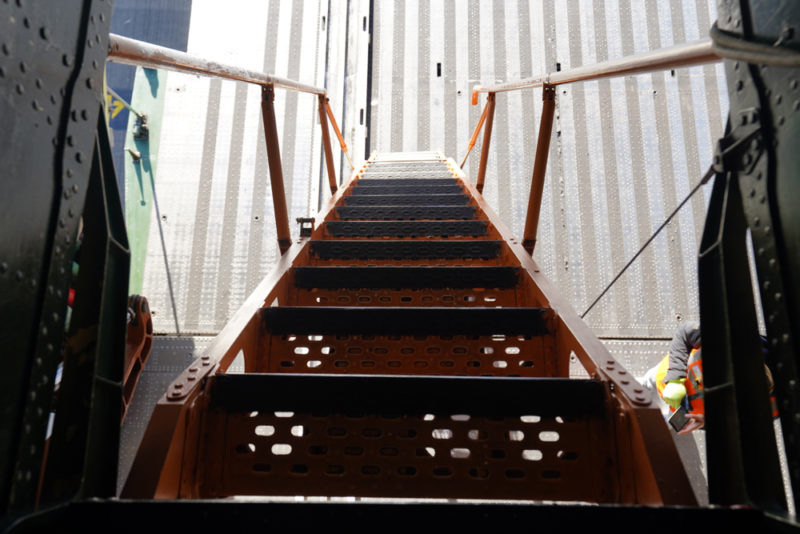
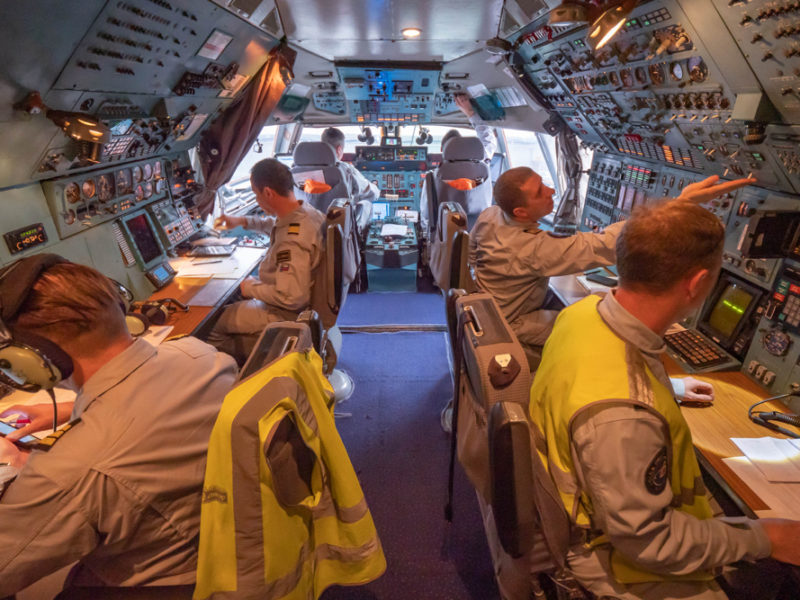
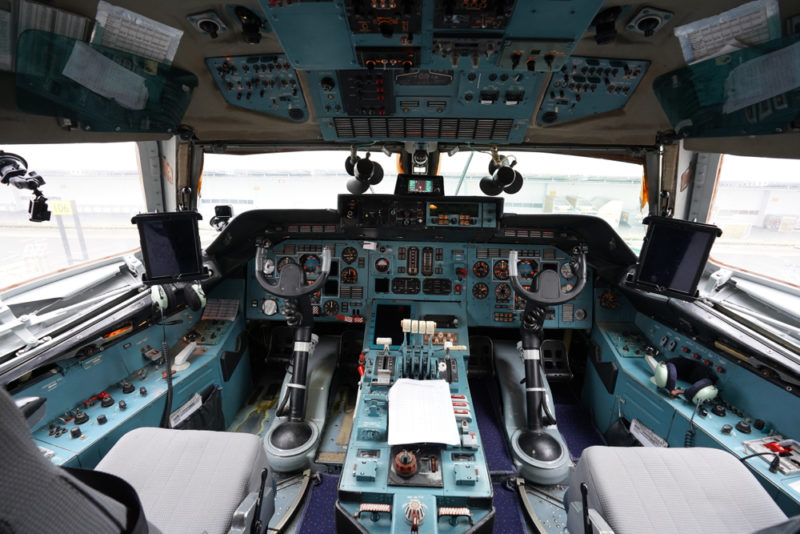
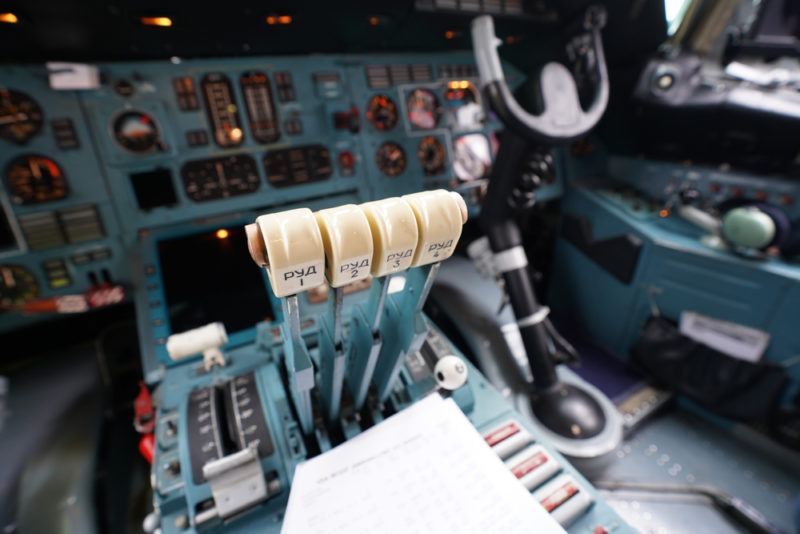
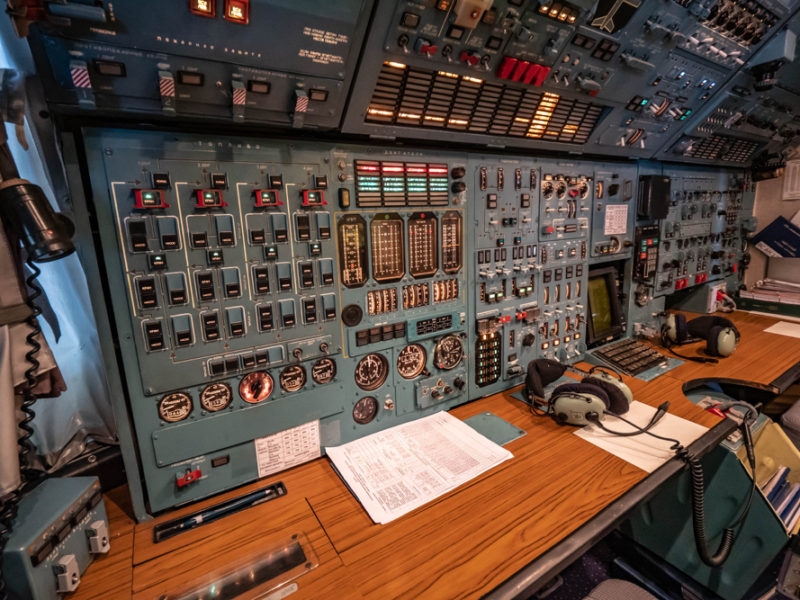
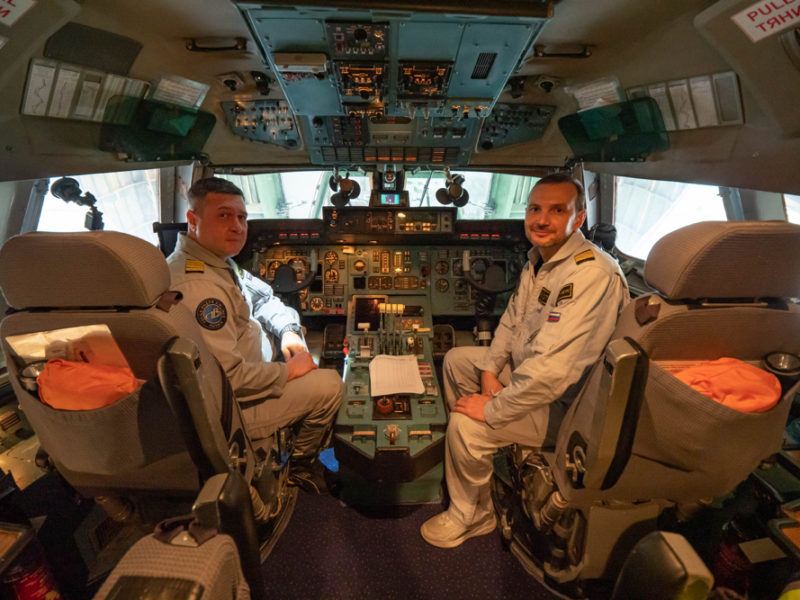
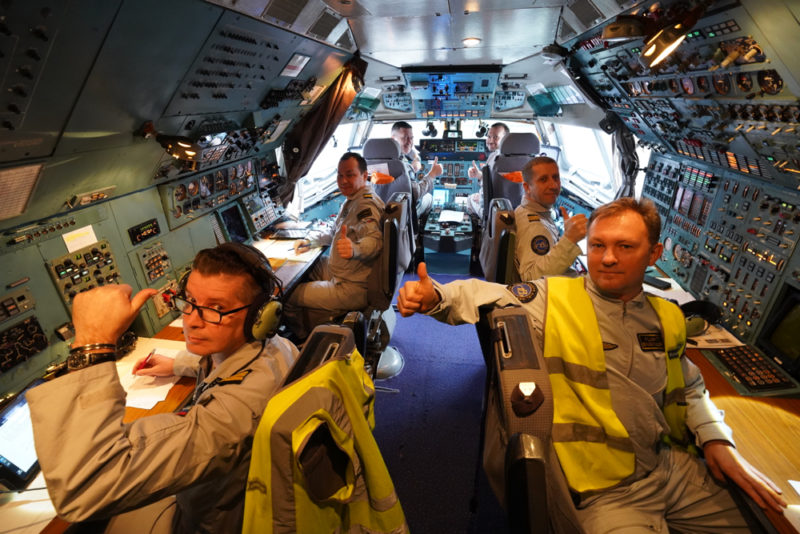
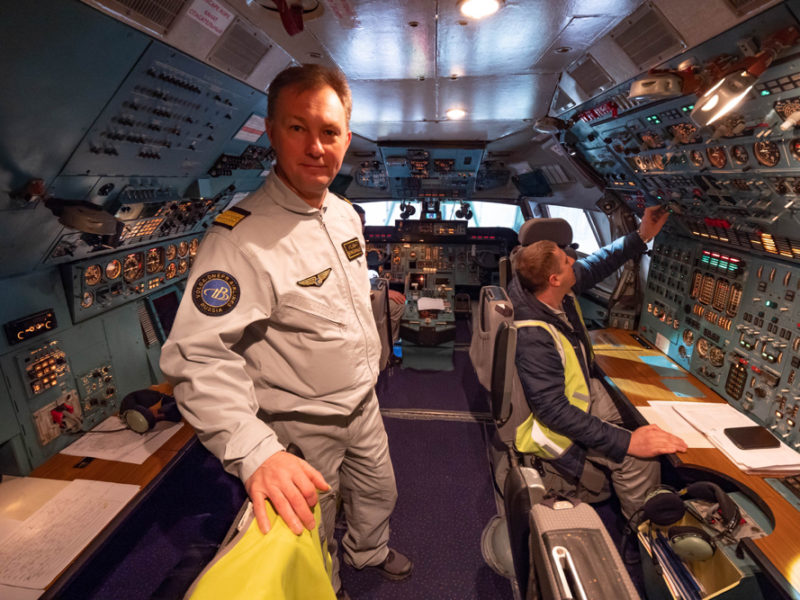
Immediately behind the cockpit there is a block of crew rest areas, which can house up to 6 crew. The crew rest area is comparable to a train compartment. The avionic bay is behind the crew rest compartment.
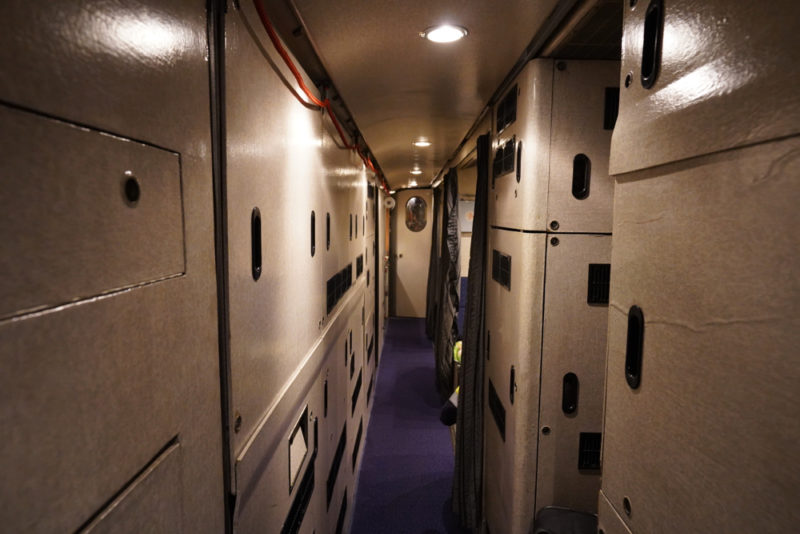
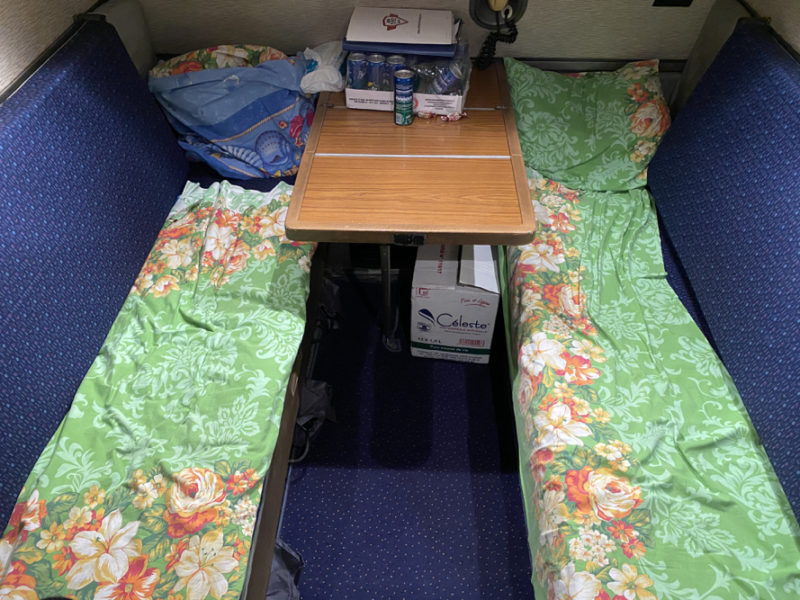
Crew rest compartment 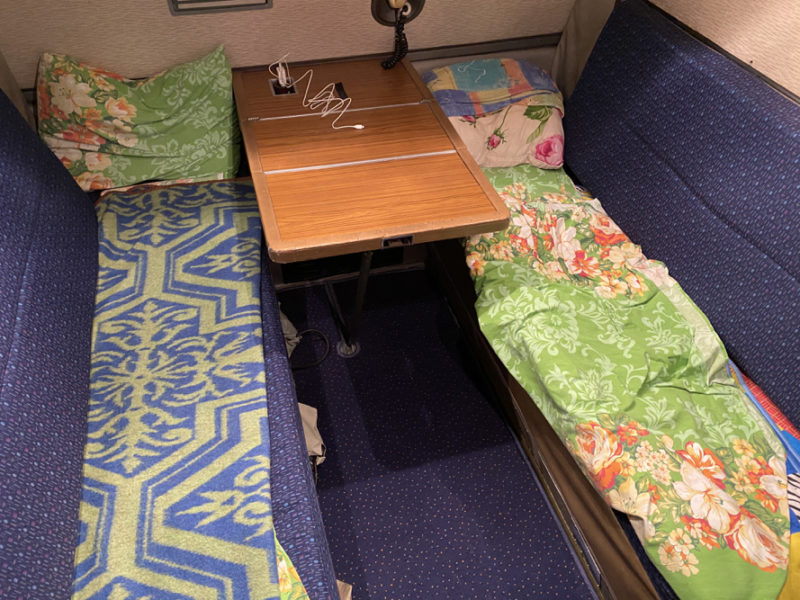
Crew rest compartment
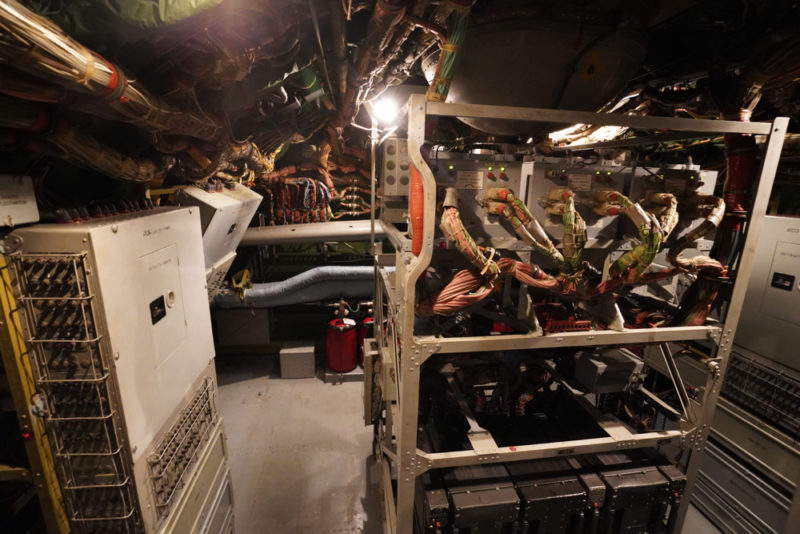
Flying on An-124
Once the cargo was loaded, the plane was ready to push back. I went to sit in the aft passenger/crew compartment, which is in the rear of the plane and accessed by a staircase. This is a completely separate area to the cockpit and crew rest.
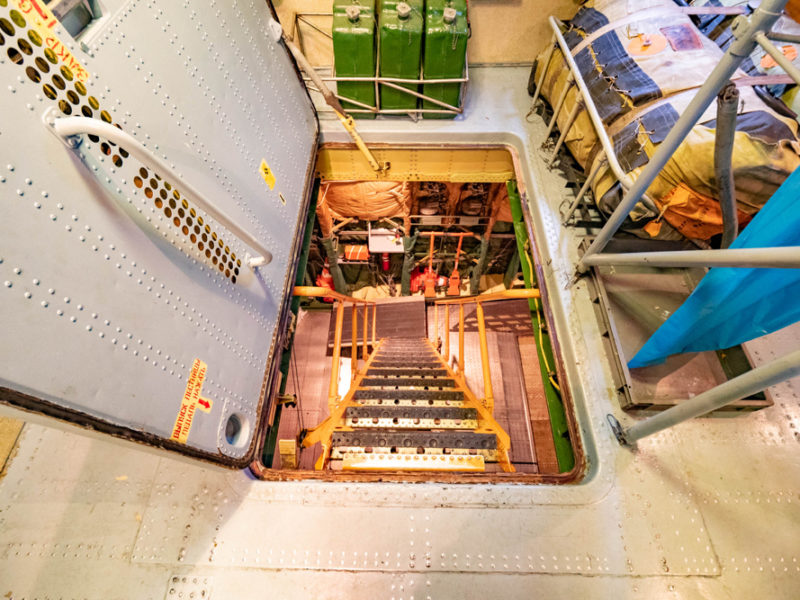
The aft crew rest has about 20 passenger seats, a roomy galley, a load master station and a toilet. There are also crew rest compartments for the team to rest during long haul flights. You can compare the upper deck of the B747 to the aft crew rest on An-124, which sits above the cargo deck.
We took off from East Midlands Airport at 16:23. The An-124 requires a minimum of 4 minutes at the end of runway, to warm up the engines before takeoff. There are no windows in the aft crew rest area, so all you hear is various levels of noise and vibration in the tube. Watch the video of An-124 takeoff.
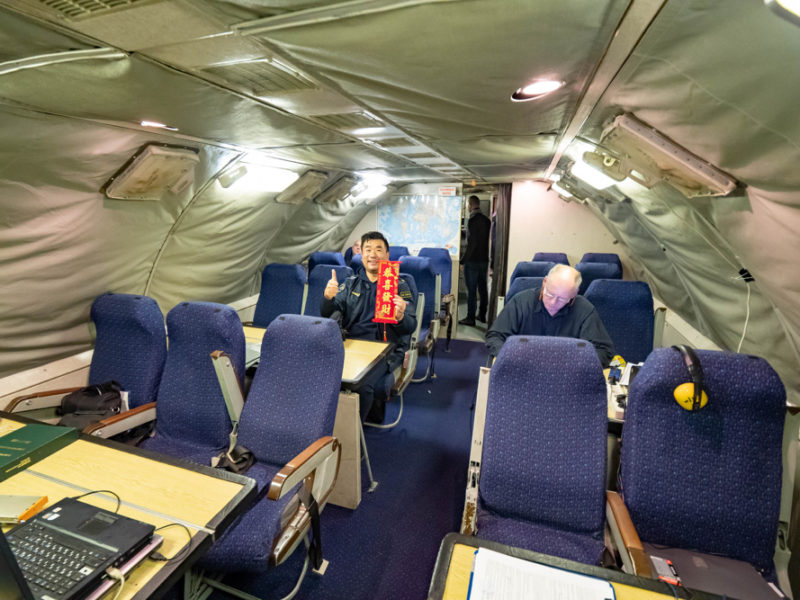
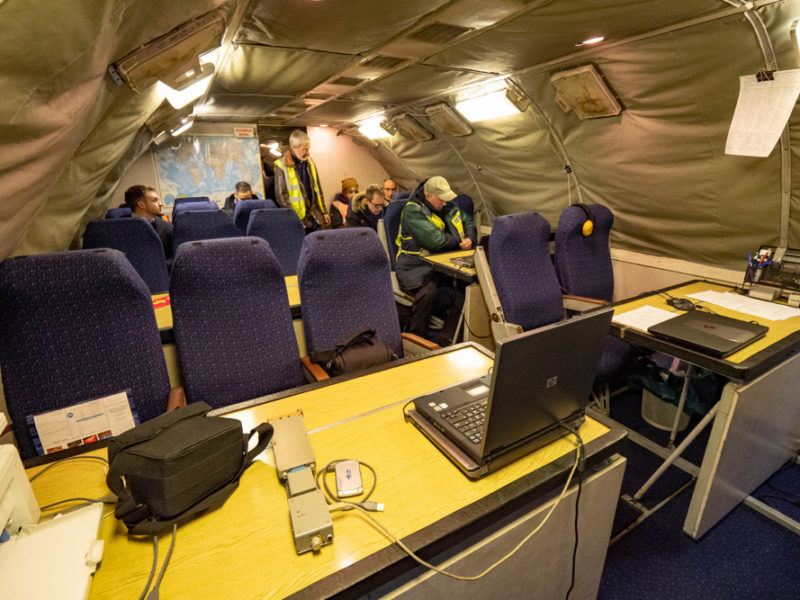

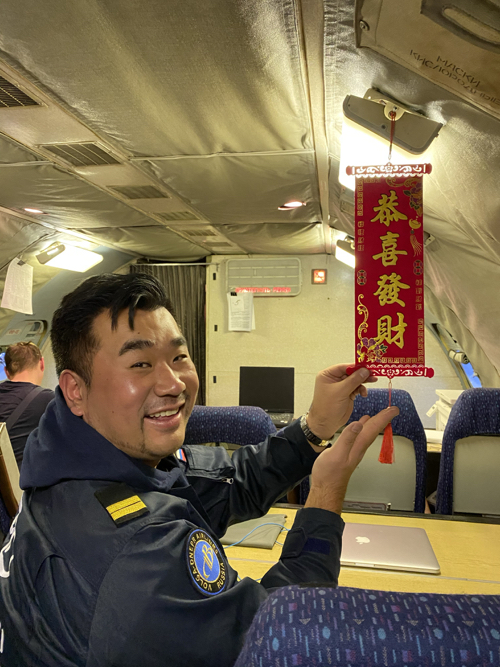
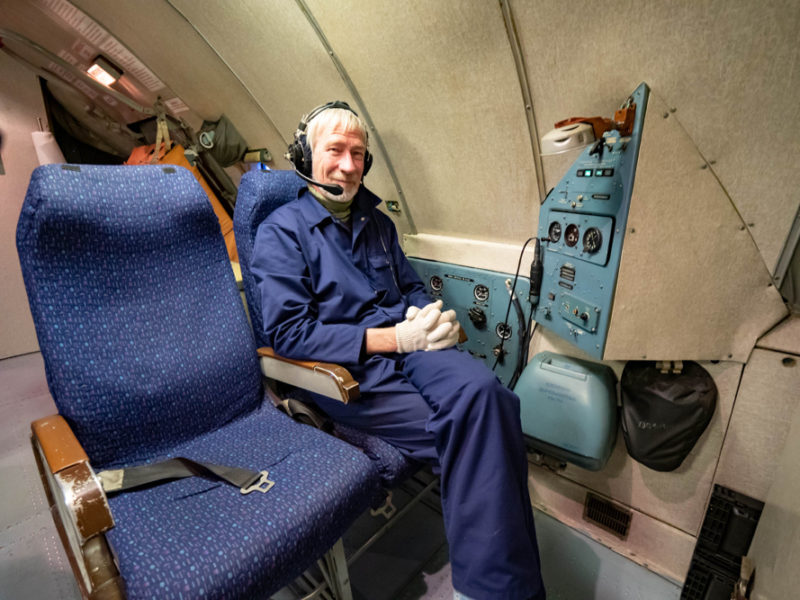
Loadmaster station on An-124 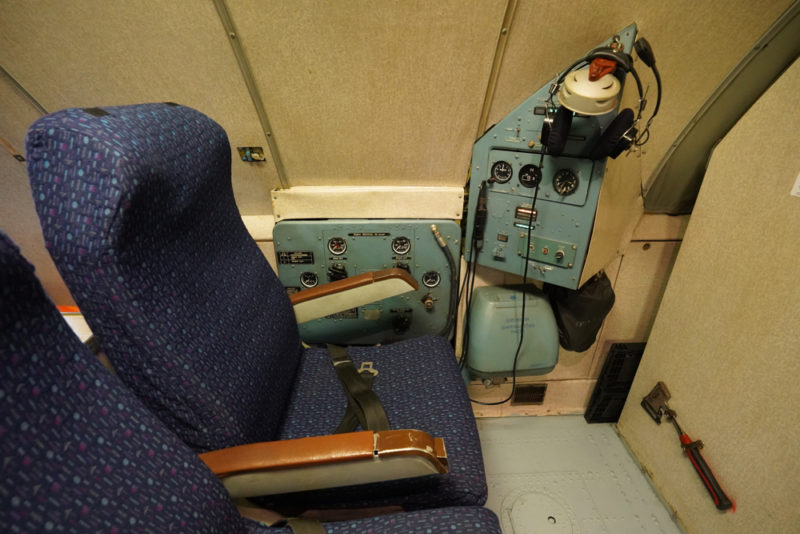
Loadmaster station on An-124
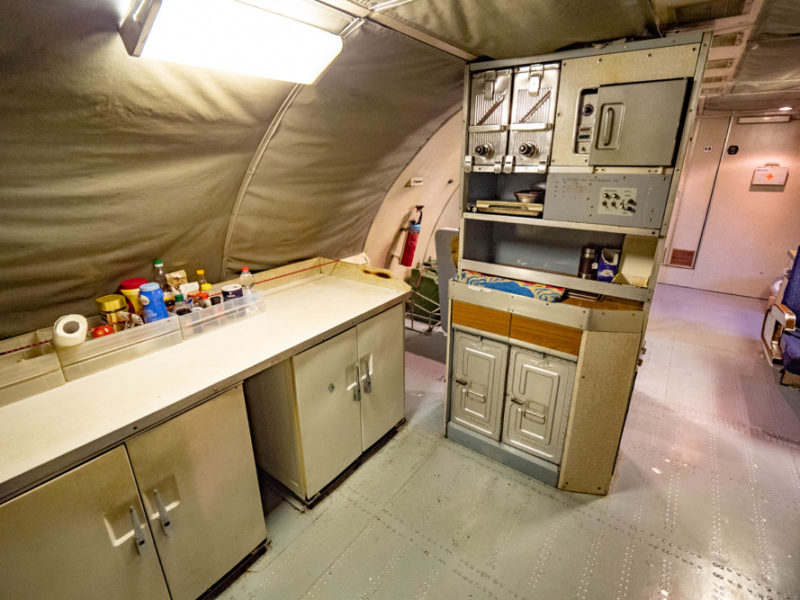
Galley on An-124 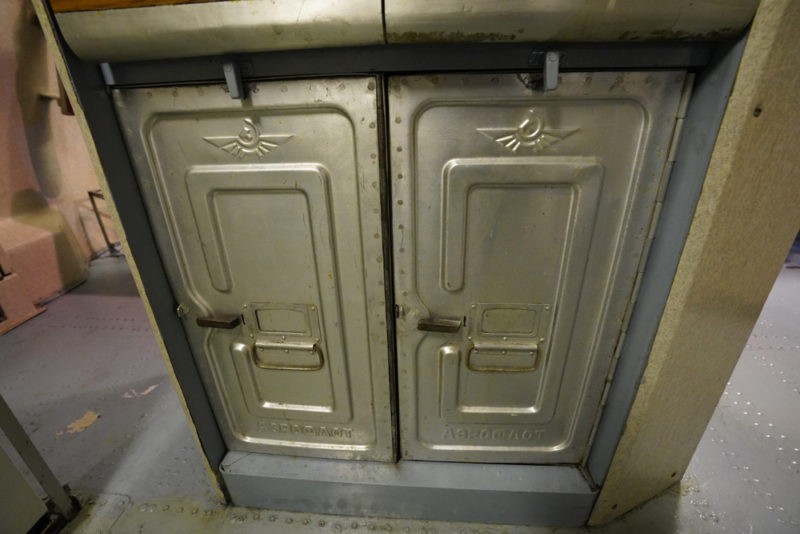
Galley on An-124

The flight initially cruised at 29,000ft then a final cruise at 31,000ft. Speed was fairly slow at 700km/h. Flight time to Toulouse was 1 hour 44 minutes. The landing was very smooth and we arrived at 19:07 in Toulouse. The hard working crew were busy again, setting up the ramp to load the cargo out.
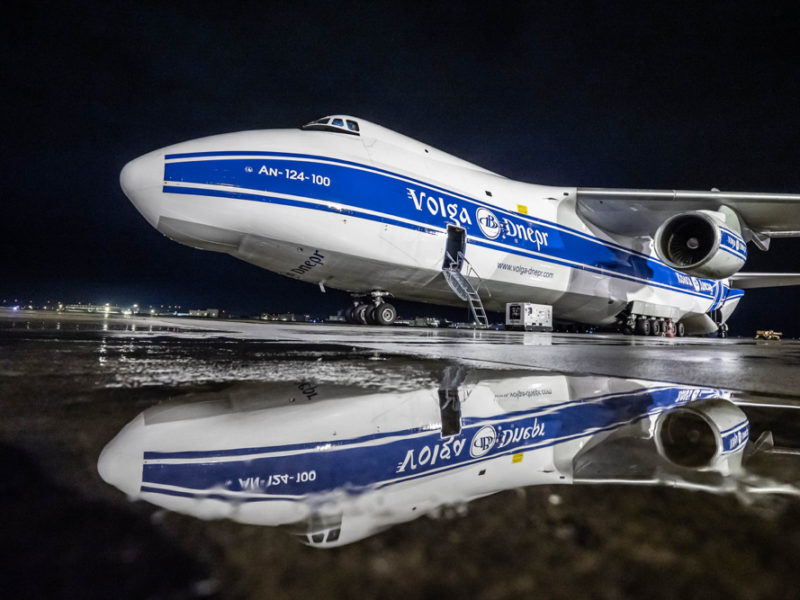
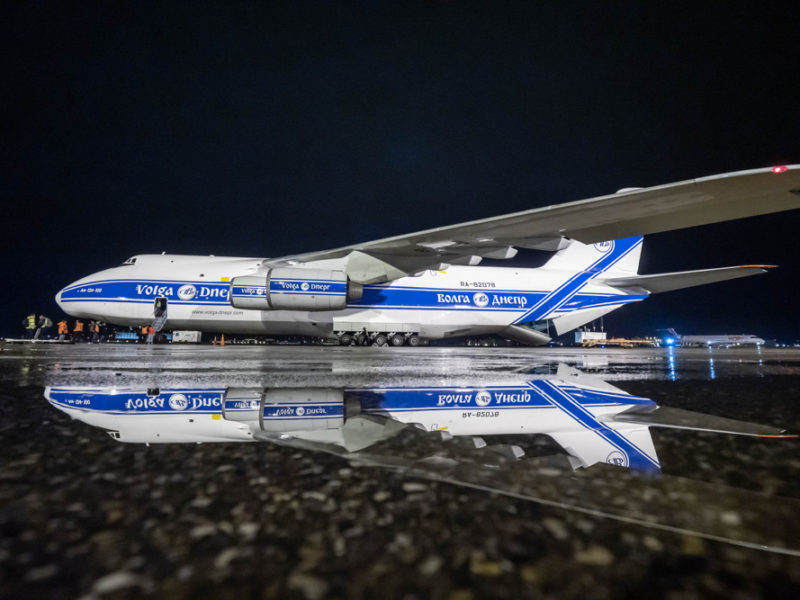
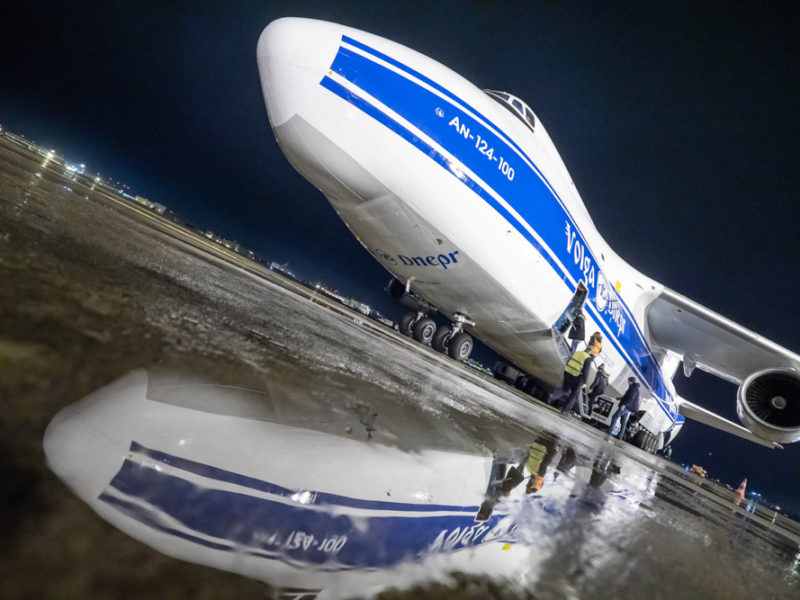
My thoughts on the An-124
There is nothing quite like the An-124! Designed in late 1970s and capable of carrying 120 tons of oversized cargo. An-124 is one of the biggest cargo aircraft in the world. It was an important means of national transport and a prestige object for the Soviet Union. Forty years later, it is still highly sought after in the transport sector.
6 cockpit crew and 7 cargo load masters accompanied my AN-124 flight. Flying on Antonov 124 is unlike any other flight experience I have had in the past. It is RAW Aviation and really brings the “AvGeekness” out of me.
Future of An-124
Changes to the aircraft include floor reinforcement and specially designed tyres to increase cargo payload up to 150T. Further enhancements will include modernization of navigation and cockpits. These modifications will ensure the world's An-124’s will continue to support the heavy lift freight moves for years to come.
Fun Facts of An-124
- Carried 160,000 Ps2’s over 8 flights. 20,000 per flight – 175 Euro pallets
- Cargo Cabin is the length of 3 London double decker buses (36.5m x 6.4m x 4.4m)
- Rocker fella Christmas tree (1998)
- Have transported a B737 fuselage in Cargo Cabin
- Wingspan as wide as a football pitch


